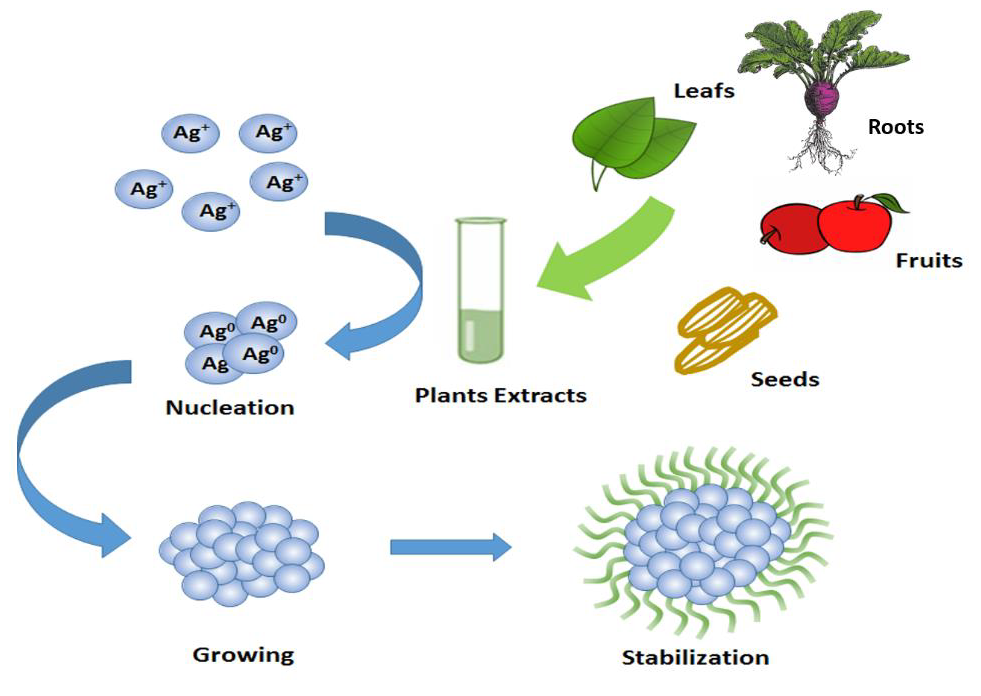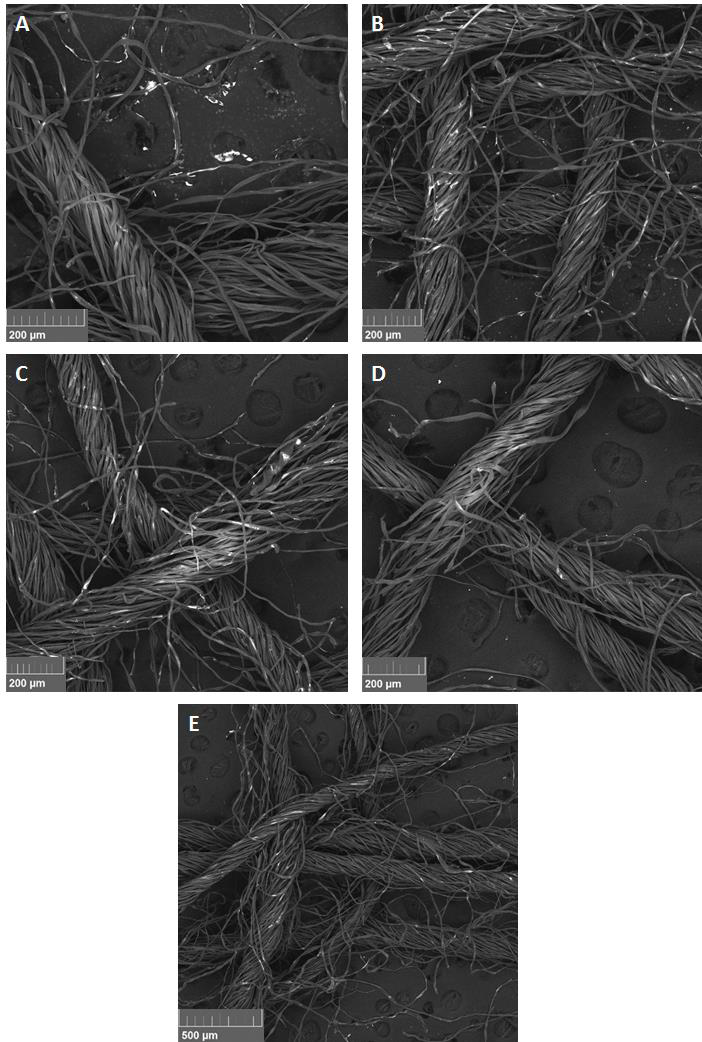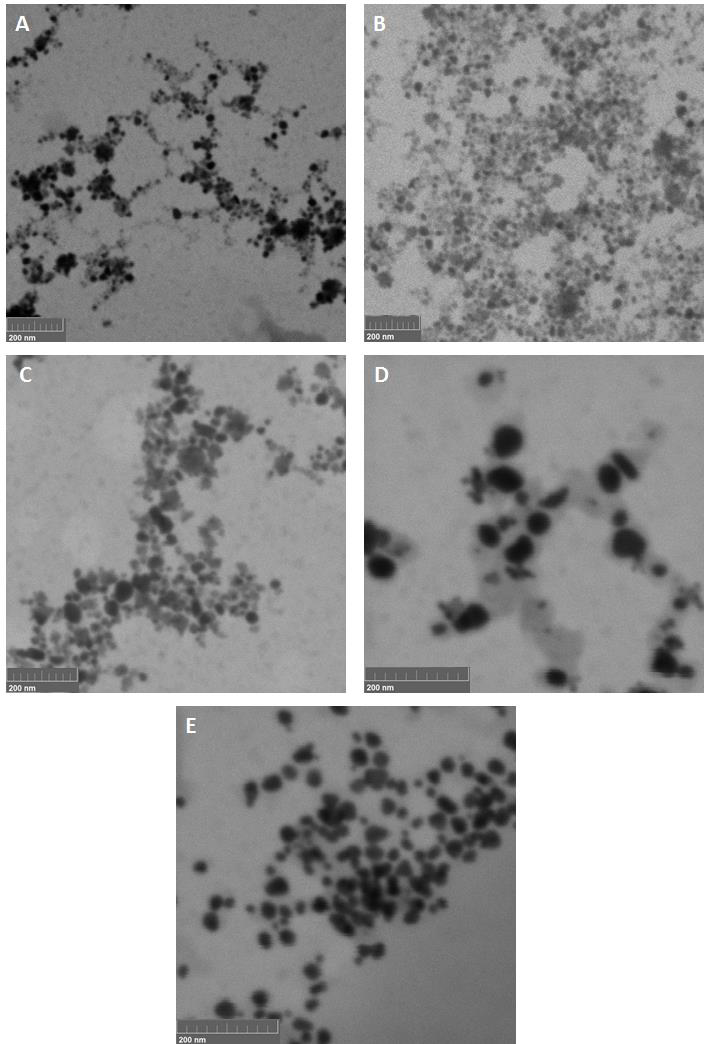The latest research published in the journal Science Advances revealed that the microbes present in various hospitals and textile products are a major cause of death.
 Study: Surface modification of textiles by green nanotechnology against pathogenic microorganisms. Image Credit: AMV_80 / Shutterstock
Study: Surface modification of textiles by green nanotechnology against pathogenic microorganisms. Image Credit: AMV_80 / Shutterstock
The research by Mr. Otávio Augusto and his team has shown that manufacturing antimicrobial textiles for hospitals would be advantageous for the termination of such bacteria and fungi.
The green process of synthesis of silver nanoparticles (AgNPs) is highly beneficial for hospital cotton fabrics.
Beta vulgaris extract was efficiently used for manufacturing such green germ-killing smart textiles which could be used in hospitals for sheets and pillows to prevent the spread of dangerous diseases by contact.

Scheme of nanoparticle biosynthesis using plant extracts. Image Credit: dos Santos, O. L. Science Advances
Silver Nano Particles
The Silver Nanoparticles utilized for this study were on the scale of 1 to 100 nm. They are synthesized in a reaction medium which is useful for the generation of a stable nucleus.
The step called growing forms larger particles, and the thorough modification of stabilizing components is responsible for particles of various sizes and shapes. Since the chemical as well as physical processes are costly and utilize toxic compounds, the synthesis and utilization of nanoparticles become a great difficulty. Hence, green synthesis is the only viable option.
Methods and Materials Incorporated in Green Nanotechnology
The green nanotechnology synthesis utilized in this study is mediated by plant extracts, cell extracts, algae, and other biomolecules. The plant extracts are highly appreciated for their cheap and efficient processes. Ionic breakdown in the liquid system of a metallic substrate is the process for sustainable nanoparticle development of AgNPs. Silver ions are reduced to silver and a nucleation process is initiated. This is essential for the stabilization of nanoparticles.
Beta vulgaris beetroot was efficiently utilized. It was cut into 2-3cm long pieces and heated to boiling point. Solution extracts were filtered and stored at a low temperature around 4 °C. The Ag nanoparticle synthesis was carried out in the exact proportions of 1:50, 1:25, 1:10, 1:5, and 1:2.
Essential stability analysis was performed in the latest research by using a UV-Vis Spectrophotometer followed by the X-ray spectroscopic analysis by dispersive energy process. Characterization is the next essential step defined in the study, and the TESCAN VEGA3 electron microscope was operated at 200kV for efficient completion of this process. This was followed by the Zeta potential analysis using a stable aqueous dispersion of silver nanoparticles.
The final step involves the validation of antimicrobial properties by using antimicrobial assay, Disk diffusion, Liquid growth inhibition, and MTT assay. All the processes and related steps have been mentioned in the research, providing an insight regarding the advantages and disadvantages of the novel concept.

SEM observation of AgNPs in sample (A) 1:2, (B) 1:5, (C) 1:10, (D) 1:25 and (E) 1:50 dispersed in the gauze fibers. Image Credit: dos Santos, O. L. Science Advances
Green Nanotechnology Latest Findings
The latest study showed that the nano extracts had a color change from red-violet to a reddish-brown and grayish-brown color. US-Siv spectrophotometry confirmed the formation of silver nanoparticles.
Samples 1: 2, 1: 5, 1:10, 1:25, and 1:50 showed typical spectra of AgNPs with the maximum obtained at 442 nm, 429 nm, 439 nm, 449 nm, and 431 nm, respectively. This is proof of stabilized silver nanoparticle synthesis with sizes varying from 35 to 80 nm.
The dispersion in hospital and medical-related textiles was observed via the process of scanning electron microscopy. Sedimentation of these particles over the surface of textile components was observed. This process was also implemented for hospital gauze fibers. Two-layered fibers were observed and images were taken for thorough analysis.
This revealed that 1:5 and 1:10 particles had a greater number of nanoparticles in their respective sample. The lesser particles in 1:25 and 1:50 samples were responsible for their decreased reactivity. Transmission Electron microscopy was a crucial step to identify the spherical shape of particles with a size less than 100 nm.
This study tested hospital textiles impregnated with AgNPs against different microorganisms. The 1:2, 1:5, 1:10 samples were effective against all microbes while 1:25 and 1:50 were deemed ineffective. The results also validated the inferior susceptibility of Gram-negative bacteria as compared to gram-positive bacteria. Hence, it is verified that silver nanoparticles affect various cellular chemical processes and are successful against resilient microbes.

TEM of AgNPs in samples (A) 1:2, (B) 1:5, (C) 1:10, (D) 1:25 and (E) 1:50. Image Credit: dos Santos, O. L. Science Advances
Industrial Insight and Limitations
The silver nanoparticle incorporation for green synthesis has been proven beneficial and effective, leading to rapid implementation of this technology in various healthcare hospitals and essentially all sectors where clean and germfree components especially textile are a necessity.
However, a few limitations have also been noted, like the complexity of plant extracts and their reduction as well as the variation of components. This study is focused on a single beetroot extract; results would be different from other extracts. However, the efficacy of the process cannot be negated due to these few factors.
In short, this novel technique in Science Advances has truly revolutionized medical care textile usage, and the implementation of nanoparticles has been proven beneficial not only for microbial termination but also for the green-sustainable environment-friendly synthesis process.
References:
dos Santos, O. L., Araujo, I. d., Silva, F. d., Sales, M. N., Christoffolet, M. A., & Backx, B. P. (2021). Surface Modification of Textiles by Green Nanotechnology against Pathogenic Microorganisms. Science Advances, 21. https://www.sciencedirect.com/science/article/pii/S2666086521001533
Disclaimer: The views expressed here are those of the author expressed in their private capacity and do not necessarily represent the views of AZoM.com Limited T/A AZoNetwork the owner and operator of this website. This disclaimer forms part of the Terms and conditions of use of this website.